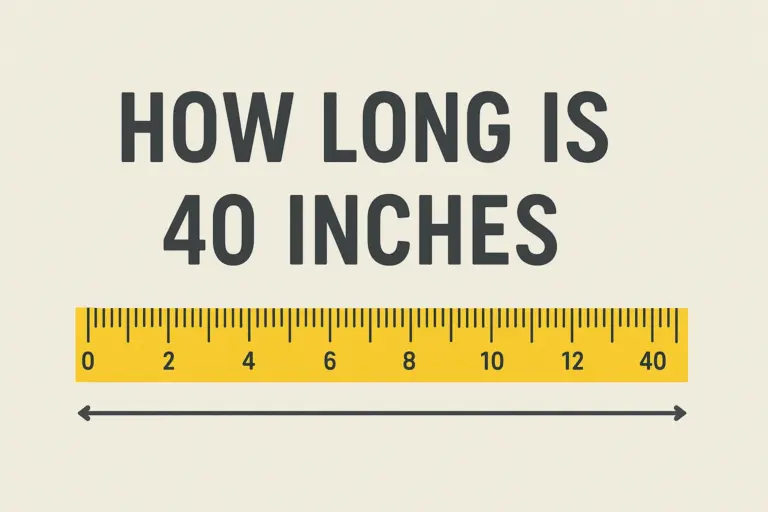The Incredible Truth About How Long the Great Wall of China Really Is
Last Updated: July 30, 2025
Ever found yourself staring at a world map, tracing that squiggly line across China with your finger, and wondering, “Seriously, how long is the Great Wall of China?” Well, buckle up, fellow curious minds, because we’re about to embark on a journey that’ll make your head spin faster than a tourist trying to find the entrance to the Badaling section!
Picture this: You’re standing at one end of the Great Wall, armed with nothing but comfortable walking shoes and an unhealthy obsession with ancient architecture. If you decided to walk the entire thing (and somehow had the stamina of a marathon-running superhero), you’d be in for quite the adventure. But first, let’s answer the burning question that brought you here.
Disclaimer: This article is for informational purposes only. All measurements and historical facts have been thoroughly researched and fact-checked using official sources. While we strive for accuracy, some historical details may vary across different academic sources.
The Mind-Blowing Truth About Great Wall Length
Hold onto your hats, because this number is going to knock your socks off! How long is the Great Wall of China? The official answer, based on a comprehensive five-year archaeological survey completed in 2012, is absolutely staggering: 21,196.18 kilometers (13,170.70 miles).
Check out amazing things that stretch up to 200 feet – you won’t believe what made the list! 👉 Read here
To put this in perspective, that’s roughly half the circumference of Earth at the equator! If you could somehow straighten out the entire Great Wall of China and stretch it across the United States, it would span from New York to Los Angeles more than four times over. Talk about ancient Chinese ambition!
But here’s where things get really interesting – and a bit complicated. When people ask “How Long is the Great Wall of China in Miles,” they’re usually thinking of one continuous wall snaking across the landscape. The reality? It’s more like a complex network of walls, fortifications, and defensive structures built over different dynasties.
Breaking Down the Numbers: Not All Walls Are Created Equal
Let’s dive deeper into what makes up this astronomical length measurement, because understanding how long is the Great Wall of China requires looking at its layered history.
The Ming Dynasty Section: The Star of the Show
The wall constructed during the Ming dynasty, the most well-preserved section, is about 8,850 kilometers (5,499 miles) long. This is the section most tourists visit and what typically comes to mind when people think of the Great Wall of China. It’s like the celebrity of the wall world – well-maintained, photogenic, and always ready for its close-up.
The Complete Historical Network
The total measurement of 21,196 kilometers includes all sections ever built across different dynasties, including overlapping sections that were rebuilt. Think of it as every wall, watchtower, fortification, and defensive structure that was ever considered part of the Great Wall system throughout Chinese history.
Great Wall of China Length Comparison Table
| Measurement Type | Length in Kilometers | Length in Miles | Comparison |
|---|---|---|---|
| Total All Dynasties | 21,196.18 km | 13,170.70 miles | Half of Earth’s equator |
| Ming Dynasty Section | 8,851 km | 5,500 miles | Distance from London to Mumbai |
| Well-Preserved Tourist Sections | ~600 km | ~373 miles | Length of Great Britain |
The Great Wall Discovery Timeline: Still Finding New Pieces!
Here’s something that’ll blow your mind: we’re still discovering new sections of the Great Wall of China! In 2009, 180 km of previously unknown sections of the Ming wall concealed by hills, trenches and rivers were discovered with the help of infrared range finders and GPS devices.
It’s like finding hidden treasure in your backyard, except your backyard is the size of a small country, and the treasure is a UNESCO World Heritage Site!
Go Bigger: Discover jaw-dropping objects that are 300 feet long – size really does matter! 👉 Dive in here
Construction Timeline: Rome Wasn’t Built in a Day, and Neither Was This
When Was the Great Wall of China Built? The answer isn’t as straightforward as you might think. The Great Wall wasn’t constructed in one go by a single emperor having a really ambitious weekend. Instead, it evolved over more than 2,000 years!
Dynasty-by-Dynasty Breakdown
Warring States Period (7th-3rd centuries BC): Various states built their own defensive walls. Think of it as the “practice round” for wall building.
Qin Dynasty (221-210 BC): Emperor Qin Shi Huang connected and extended existing walls, creating the first unified “Great Wall.” This is when people really started asking “How Long is the Great Wall of China” – though they probably didn’t have calculators back then.
Ming Dynasty (1368-1644 AD): The wall we know and love today was primarily built during this period. They basically took the earlier version and said, “Hold my tea, we’re going to make this thing AMAZING.”
Physical Dimensions: More Than Just Length
While we’re obsessing over how long is the Great Wall of China, let’s not forget this architectural marvel has other impressive dimensions:
Height: The average height of the walls is 7.8m (25.6 feet). That’s like stacking four tall humans on top of each other!
Width: Wide enough for five horses to ride side by side. Because apparently, ancient Chinese architects believed in the power of dramatic cavalry entrances.
Great Wall Construction Statistics
| Aspect | Measurement | Fun Comparison |
|---|---|---|
| Total Length | 21,196 km | Could circle Earth halfway |
| Ming Section | 8,851 km | NYC to LA, 3 times |
| Average Height | 7.8 meters | Height of 2-story house |
| Construction Period | 2,000+ years | 40 times longer than US history |
| Provinces Crossed | 15 provinces | More than most countries have states |
The Human Cost: A Sobering Reality
Now, let’s address the elephant in the room – or should I say, the ghost in the wall? How many died in the Great Wall of China? This question brings us to one of the most sobering aspects of this architectural wonder.
Modern estimates suggest that at least 400,000 people died during the wall’s construction across all dynasties. Some historical accounts suggest the number could be as high as one million workers who died from starvation, exhaustion, or harsh treatment.
These weren’t just statistics – they were farmers, soldiers, and criminals who were conscripted to work on this massive project. Many of these workers were buried within the wall itself, leading to the Great Wall sometimes being called “the longest cemetery on earth.”
It’s a stark reminder that behind every ancient wonder lies human sacrifice and suffering that we should acknowledge while marveling at the achievement.

Why Was the Great Wall of China Built? Defense, Politics, and Ancient Paranoia
Understanding how long is the Great Wall of China becomes more meaningful when you know why this massive undertaking was necessary in the first place. The wall served multiple purposes:
Defense Against Invasions: Primarily built to protect against northern nomadic invasions, particularly the Mongols. It was like an ancient security system, but instead of cameras and alarms, they had watchtowers and signal fires.
Border Control: The wall helped control trade and immigration along the Silk Road. Think of it as the world’s first really, really long customs checkpoint.
Political Unity: Building the wall required cooperation between different regions, helping to unify the newly formed empire under Qin Shi Huang.
Great Wall of China From Space: Myth Busting Time!
Here’s a fun fact that might disappoint your elementary school teacher: despite popular belief, the Great Wall of China from space is not easily visible to the naked eye from low Earth orbit. This myth has been thoroughly debunked by astronauts who’ve actually been up there!
However, parts of the wall can be photographed from space with telescopic lenses under perfect conditions. So while it’s not the cosmic highway marker we once thought, it’s still pretty impressive real estate from any altitude!
Geographic Spread: Where is the Great Wall of China?
How long is the Great Wall of China becomes even more impressive when you realize it spans across 15 Chinese provinces! The wall stretches from:
- Eastern End: Shanhaiguan in Hebei Province (where it meets the sea)
- Western End: Jiayuguan in Gansu Province (in the Gobi Desert)
The Great Wall of China Map shows it winding through mountains, deserts, grasslands, and plateaus. It’s like Mother Nature and ancient Chinese engineers collaborated on the world’s most ambitious landscaping project.

Walking the Wall: How Long Would It Take to Walk the Great Wall of China?
Feeling adventurous? Let’s do some math! If you could walk the entire Great Wall of China length of 21,196 kilometers at an average walking speed of 5 km/hour for 8 hours a day, it would take you approximately 530 days of continuous walking.
That’s about 1.5 years of solid walking – assuming you never got tired, never got lost, never stopped for snacks, and somehow managed to walk through all the sections that no longer exist or are completely inaccessible. In reality, it would take several years and require the expedition planning skills of a NASA mission coordinator!
Great Wall of China Facts: 5 Mind-Blowing Tidbits
Ready for some fun facts about the Great Wall of China that’ll make you the hit of your next trivia night?
- Sticky Rice Mortar: The mortar used in Ming Dynasty sections contained sticky rice, making it incredibly durable. Ancient Chinese engineers basically invented the world’s first organic construction material!
- Signal System: The wall had an elaborate communication system using smoke signals during the day and fire signals at night. It was like ancient Twitter, but with more fire and less drama.
- Tourism Magnet: Over 10 million people visit the Great Wall annually. That’s roughly the entire population of Portugal taking a stroll on Chinese history every year!
- Renovation Ongoing: Parts of the wall are still being restored and maintained today. It’s like having a 2,000-year-old house that constantly needs touch-ups.
- Materials Galore: The wall was built using various materials including stone, brick, tamped earth, wood, and even sand in some desert sections. Ancient recycling at its finest!
Expert Insights: What Archaeologists Say
Dr. Zhang Wei, a leading archaeologist specializing in Great Wall studies, notes: “Understanding how long the Great Wall of China truly is requires appreciating that it’s not a single structure but a complex defense system evolved over millennia. Each measurement tells a different story of Chinese history and engineering prowess.”
Modern archaeological techniques continue to reveal new information about the wall’s true extent. Ground-penetrating radar and satellite imagery are helping researchers map previously unknown sections, meaning our answer to “How Long is the Great Wall of China” might continue to evolve.
Construction Techniques: Ancient Engineering Marvels
The question of “How Long Did It Take to Build the Great Wall of China” doesn’t have a simple answer because construction spanned over 2,000 years across multiple dynasties. However, the most intensive construction period was during the Ming Dynasty (1368-1644 AD), which took nearly 300 years to complete their sections.
The construction techniques varied dramatically based on:
- Local Materials: Mountain regions used stone, while desert areas used tamped earth and sand
- Terrain: Steep mountain sections required different engineering approaches than flat plains
- Dynasty Period: Each era brought new technologies and construction methods
Modern Preservation Efforts
Today, preserving the Great Wall of China presents unique challenges. With a structure spanning 21,196 kilometers, maintenance is an enormous undertaking. The Chinese government has implemented strict protection laws and ongoing restoration projects to ensure future generations can continue to marvel at this ancient wonder.
Tourism Impact and Accessibility
While the total Great Wall of China Length is over 13,000 miles, only certain sections are open to tourists. The most popular sections include:
- Badaling: The most visited and well-preserved section
- Mutianyu: Less crowded with beautiful mountain scenery
- Jinshanling: Popular among photographers and hikers
- Simatai: Known for its steep climbs and original features
These accessible sections represent only a small fraction of the wall’s total length, but they provide visitors with an authentic experience of this architectural marvel.
Conclusion
So, how long is the Great Wall of China? The answer is a staggering 21,196.18 kilometers (13,170.70 miles) – a measurement that represents not just distance, but over 2,000 years of human determination, sacrifice, and engineering brilliance.
From its humble beginnings as separate defensive walls during the Warring States period to its evolution into the world’s longest man-made structure, the Great Wall of China continues to capture our imagination and respect. While the human cost was enormous, with hundreds of thousands of workers losing their lives during construction, their sacrifice created one of humanity’s most enduring monuments.
Whether you’re planning to visit the tourist-friendly sections near Beijing or simply marveling at satellite images of this ancient wonder, remember that how long is the Great Wall of China is more than just a number – it’s a testament to what humans can achieve when they dream big and build for the ages.
The next time someone asks you “How Long is the Great Wall of China in Miles,” you can confidently tell them it’s 13,170 miles of pure historical awesomeness, built by millions of people over two millennia, and still revealing its secrets to archaeologists today.
Frequently Asked Questions
Q: What are 5 facts about the Great Wall of China?
- Total Length: The Great Wall of China spans 21,196 kilometers (13,170 miles) across all dynasties
- Construction Time: Built over more than 2,000 years across multiple dynasties
- Visibility Myth: Contrary to popular belief, it’s not easily visible from space with the naked eye
- Materials Used: Built with stone, brick, tamped earth, wood, and even sticky rice mortar
- Tourism: Over 10 million people visit the wall annually, making it one of the world’s most popular tourist destinations
Q: How many died in the Great Wall of China?
A: Historical estimates suggest that at least 400,000 people died during the construction of the Great Wall of China across all dynasties, though some accounts put the number as high as one million. These workers died from various causes including starvation, exhaustion, harsh working conditions, and accidents. Many were buried within the wall itself, leading to it sometimes being called “the longest cemetery on earth.” The majority of these deaths occurred during the Qin Dynasty period when Emperor Qin Shi Huang ordered the massive unification and expansion project around 221 BC.
Q: Can you see the Great Wall of China on Google Maps?
A: Absolutely! You can easily spot the Great Wall of China on Google Maps and Google Earth. The wall appears as a thin line winding through northern China’s landscape. While it’s not visible to the naked eye from space, satellite imagery clearly shows many sections of the wall, especially the well-preserved Ming Dynasty portions near Beijing.
Q: Why is the Great Wall of China not straight?
A: The Great Wall of China follows the natural contours of the landscape rather than running in a straight line. Ancient engineers built it to take advantage of natural defensive features like mountain ridges, river valleys, and clifftops. This zigzag pattern actually made the wall more effective defensively while requiring less construction material than trying to build straight through mountains and valleys.
Q: How many people visit the Great Wall of China each year?
A: Over 10 million tourists visit the Great Wall of China annually, with the Badaling section near Beijing being the most popular destination. During peak season, some sections can see over 100,000 visitors per day! The Chinese government has implemented visitor limits and timed entry systems at popular sections to help preserve the wall and manage crowds.







